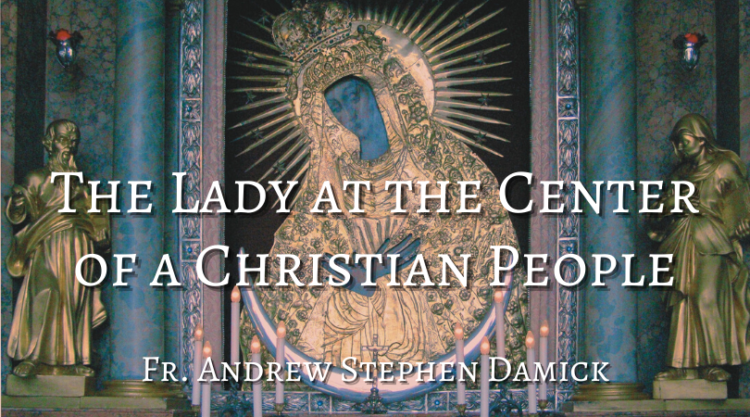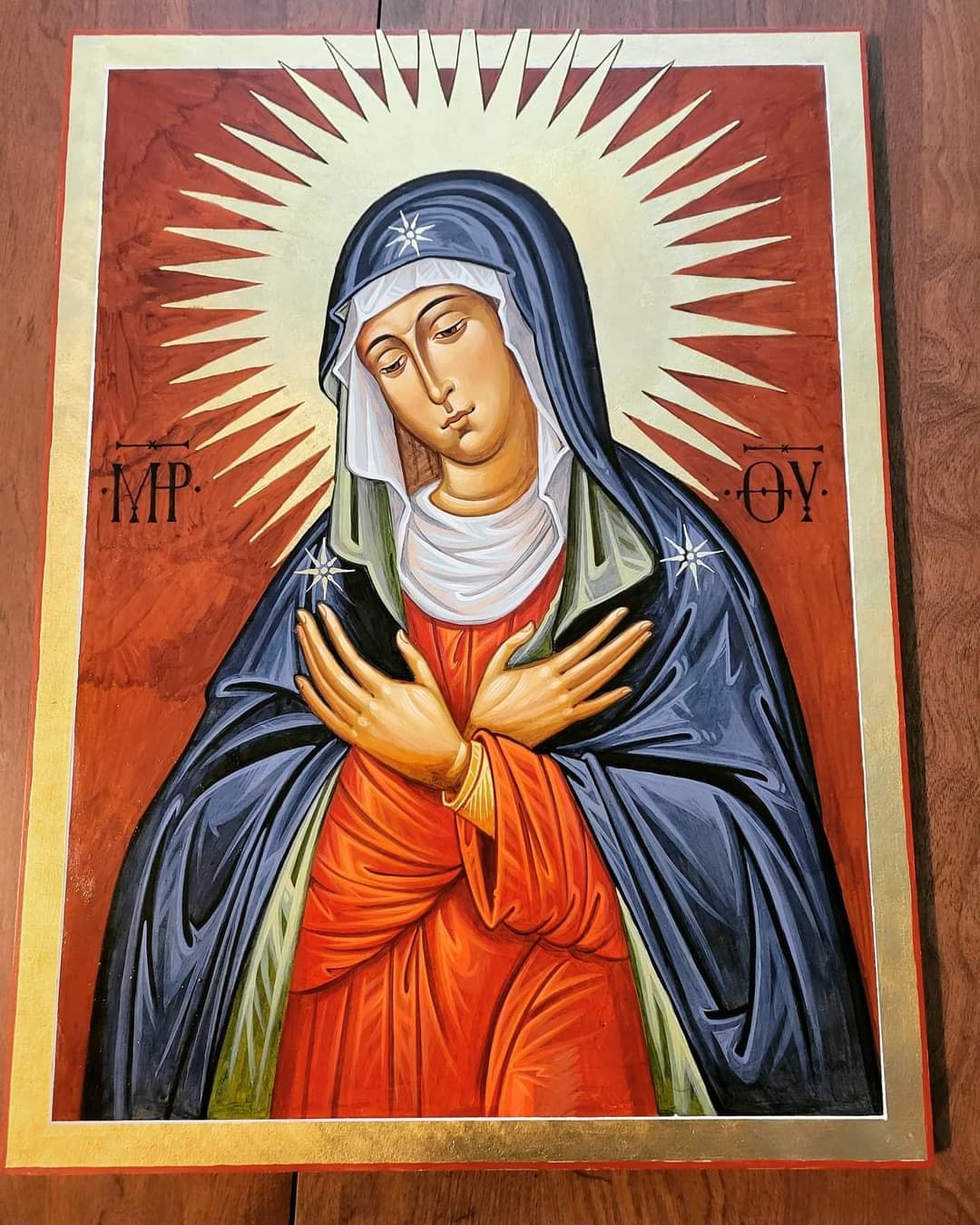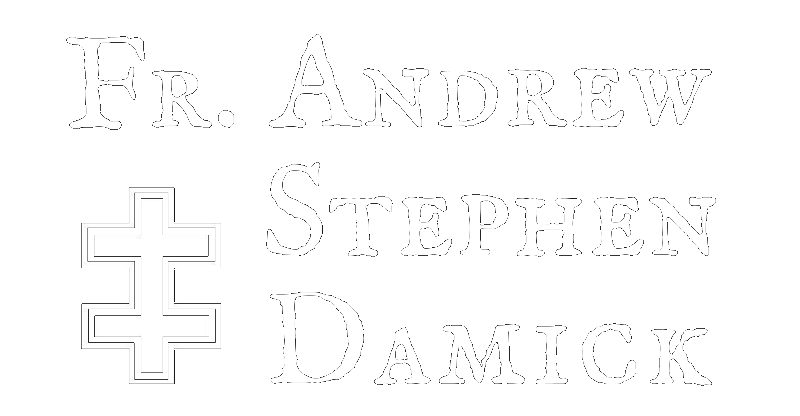
Sunday after the Nativity of Christ / Synaxis of the Theotokos, December 26, 2021
Galatians 1:11-19; Matthew 2:13-23
In the Name of the Father and of the Son and of the Holy Spirit, one God. Amen.
Christ is born! Glorify Him!
A friend of mine likes to say that no nation or people is truly a Christian nation or people until it has a nationally-venerated icon or shrine of the Theotokos. This is not a doctrine of the Church, of course, but it is a cultural observation that rings true in a certain way. There is something about how a Christian society works that almost inevitably results in having a veneration for the Lord’s mother at the center.
There are many famous icons and shrines of the Theotokos we can think of which are venerated by whole regions and countries—the icon of Our Lady of Vladimir in Russia, the shrine of Our Lady of Walsingham in England, the Axion Estin icon on Mount Athos, the icon of Our Lady of Czestachowa in Poland, Our Lady of Guadalupe in Mexico, and Our Lady of Saidnaya in Syria.
These shrines and icons have their own feast days on which pilgrimage is especially made, and faithful Christians come to honor the Mother of our Lord God and Savior Jesus Christ. Today, on the day after the feast of our Lord’s Nativity, a feast has been designated by the Orthodox Church which has this same purpose—to honor the Virgin Mary. It is called the Synaxis of the Theotokos.
And today is also the feast day in the Orthodox Church of one of these icons of a Christian people. In that people’s native tongue, it is called Aušros Vartų Dievo Motina. To the Russians who live nearby, it is called Остробрамская икона Божией Матери. The icon is known by many names in various tongues, but in English, it is called Our Lady of the Gate of the Dawn. This is the national patronal icon of the country of Lithuania, from which my own ancestors came to the United States about 116 years ago.
Many copies of this icon have been made, and it is venerated all throughout the lands of what once was the Grand Duchy of Lithuania and the Polish-Lithuanian Commonwealth—not only modern Lithuania but also Poland and Ukraine and Belarus. And of course the veneration and copies spread well beyond those lands, reaching well into Russia. The great Russian ascetic St. Seraphim of Sarov had a copy of this icon that he prayed in front of. Indeed, there are many icons of St. Seraphim picturing him praying in front of his copy, which now is held in the private chapel of the Patriarch of Moscow himself.
 And as you have probably now guessed, this is a hand-painted copy that you see here before you, given to me as a gift this past Pascha and painted by Protodeacon Paul Drozdowski. We venerate it in our home.
And as you have probably now guessed, this is a hand-painted copy that you see here before you, given to me as a gift this past Pascha and painted by Protodeacon Paul Drozdowski. We venerate it in our home.
The original icon is quite large and covered with a metallic riza covering, both to protect the painting and also to adorn it. It is situated in a chapel above an old south-facing gate of the city of Vilnius (the capital of Lithuania). There are various theories as to why this gate is referred to as the “Gate of Dawn” even though it faces south. One is that it is because of the icon situated in the gate, which has a sunrise motif to the halo around the head of the Theotokos.
It is not certain who painted the original. There are various stories. The one that is most accepted is that it is an early 17th century painting by a Roman Catholic painter—Lithuania is a majority-Catholic country. There are also stories that it is from much earlier, that it was acquired in the 14th century by Grand Duke Algirdas as a war trophy from Crimea, which would make its origins certainly Orthodox.
Whatever the case, it has been venerated for centuries by both Orthodox Christians and Roman Catholics. Every year on the day after the Nativity of Christ, Orthodox clergy and faithful venture into the chilling Lithuanian winter to go to the shrine above the Dawn Gate and pray a prayer of supplication to the Theotokos at the icon (which will be 13 days from now, since the church there uses the Julian calendar).
And the tradition of Orthodox veneration of this icon has been truly hallowed by the devotion shown to it by the great St. Seraphim of Sarov. So you can see that this icon is now a great treasure for my family.
![]()
How are we to understand why it is that Christian nations always place the Virgin Mary the Theotokos at the center of their lives? This may be hard for us Americans to understand, because we do not belong to a truly Christian nation. We are still a missionary church, called to make our nation a Christian one.
To understand why the Theotokos would stand at the center and above a nation, we need to know something about her place in the Kingdom of Christ. Because she is the mother of Jesus Christ, she is also therefore the Queen Mother. As the Queen Mother, she stands at the right hand of her Son, our God.
She is called “more honorable than the cherubim and more glorious beyond compare than the seraphim.” Cherubim and seraphim are guardian angels at Christ’s throne. They are the highest of the angels. And we sing that she is higher even than them—more honorable and more glorious.
If we understand what angels do, then we can understand what she does, because she is now more exalted than they are. What do angels do? They worship at the throne of Christ and they participate in His works of protection and care for the creation, of defending against evil, of bringing messages from God, of tending to everything in the whole cosmos. And we see the saints, who have been brought up into the heavenly hosts, doing all these same things.
And she is their captain, the champion leader whose prayers to her Son our God are so effective for all these purposes. She is a convener of the saints, the one who beckons us to her Son.
On this day after Christmas, we celebrate this feast of her Synaxis—and for me especially I celebrate the feast of this icon of hers—and we see her in relation to where we were with her yesterday and continue to be with her throughout these seven days of the feast of the Nativity. And where is that?
Today we are with her to marvel next to the manger. We marvel not because this is a baby born to us in the dark of winter, not only because of the miracle of a virgin birth. We marvel because this is the Word of the Lord, the Angel of the Lord, the Angel of Great Counsel, the Son of Man, the Prince of Peace, Yahweh the God of Israel, the One enthroned next to His Father, the Lamb of God slain from the foundation of the world, the God Who is man, the Man Who is God.
He has come into the world to abolish the demonic powers, to put down death, to crush the serpent who tempted our first parents into transgressing the commandment. With His coming, peace has come to earth, good will toward men.
At His baptism which we will celebrate in 11 days, He will be introduced to the world by His cousin, the Forerunner and Baptist John, but here, He is introduced to the world by His Mother, the Ever-Virgin Theotokos, the Lady of us all.
And it is these two who stand at His right and at His left in the Kingdom. It is the veneration of the Theotokos and all the saints which brings a Christian people into the Kingdom of Christ, to stand there with them at His throne.
Therefore, we lift up our hearts to her today, ask her for her prayers to Christ her Son, to the God-man Jesus Christ, and we hear her call to us to worship Him, pondering all these things in our own hearts and magnifying the Lord born for us in a humble cave.
To our Savior Jesus Christ, therefore, with His Father and Holy Spirit, be all glory, honor, and worship, now and ever, and unto ages of ages. Amen. Christ is born! Glorify Him!




One comment:
Comments are closed.